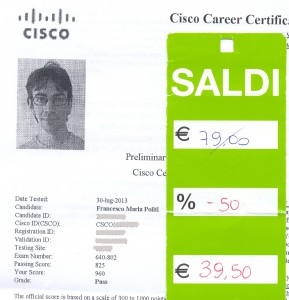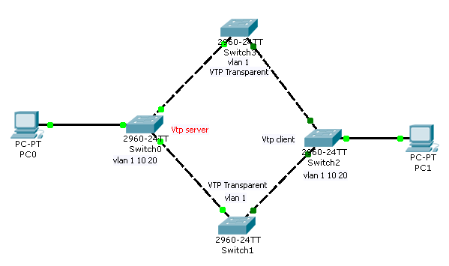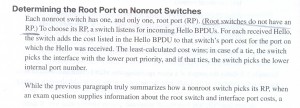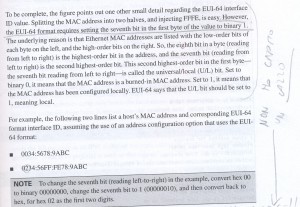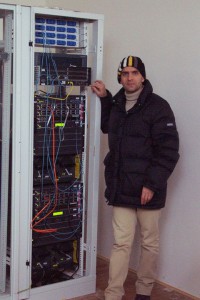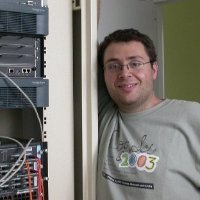Archive for July, 2013
Portafortuna
– Describe how a network works: 100%
– Configure, verify and troubleshoot a switch with VLANs and interswitch communications: 100%
– Implement an IP addressing scheme and IP Services to meet network requirements in a medium-size Ente(rprise) 100%
– Configure, verify, and troubleshoot basic router operation and routing on Cisco devices 92%
– Explain and select the appropriate administrative tasks required for a WLAN 100%
– Identify security threats to a network and describe general methods to mitigate those threats 100%
– Implements and verify WAN links 100%
– Implement, verify, and troubleshoot NAT and ACLs in a medium-size Enterprise branch office network: 60%
mannaggia. secondo m’√ɬ® scappato un “eq 80” che non c’andava
cmq sono soddisfatto perch√ɬ©, in uno dei due libri su cui ho studiato (CCNA ICND2 Official Exam Certification Guide di Wendell Odom, seconda edizione) c’erano un paio di cose che mi erano oscure.
una riguarda lo Spanning Tree.
la storia è: se non ci fosse lo Spanning Tree, quando si collegano n switch tra di loro, e vi sono dei link ridondati, si scatenerebbe un mega bordello in brevissimo tempo.
lo spanning tree fa s√ɬ¨ che gli switch si mettano d’accordo tra di loro (senza alcuna configurazione umana) e eleggano il “root switch”.
il root switch ha tutte le porte “attive”.
tutti gli altri switch devono decidere qual √ɬ® la propria “root port”, cio√ɬ® la porta che ha il minor “costo” per raggiungere il root. anche questa porta √ɬ® attiva.
dopodich√ɬ©, c’√ɬ® il concetto di designated port e di blocked port che per ora sorvolo.
non è affatto infrequente che uno switch (non root) abbia due porte che presentano lo stesso costo per raggiungere lo switch root.
come si decide in questi casi?
facciamo un esempio:
facciamo finta che il root switch sia quello pi√ɬĻ a sinistra.
e che lo switch su cui mi sto ponendo il problema di quale sia la root port si quello pi√ɬĻ a destra.
ho due percorsi per arrivare al root: o passo sopra, o passo sotto.
facciamo finta che sono tutte interfacce Gigabit, quindi il costo nei due tragitti è identico.
il libro dice:
s√ɬ¨ ma.. quale port priority? di quale port? dello switch root? di uno switch che mi inoltra l’hello BPDU (quello sopra o quello sotto)? o si riferisce alla priorit√ɬ† della porta “ricevente” (switch a destra)?
alla fine, ho scoperto che online c’era l’errata corrige:
Page 100 √Ę‚ā¨‚Äú 2nd to last paragraph √Ę‚ā¨‚Äú current last sentence that fills most of the last three lines (begins √Ę‚ā¨ŇďThe least-calculated cost win;√Ę‚ā¨¬¶√Ę‚ā¨¬Ě) √Ę‚ā¨‚Äú the sentence is missing a tiebreaker. To fix the problem, replace this last sentence with: √Ę‚ā¨ŇďThe least-calculated cost wins. If a tie occurs, the switch chooses as root port the port connected to the best neighboring switch port, based on the following three tiebreakers, in order: lowest neighbor bridge ID, lowest neighbor port priority, and lowest neighbor internal port number. (Note that the switch considers only neighbors in the tied least-cost path for these tiebreakers.)√Ę‚ā¨¬Ě
l’altra cosa riguarda l’ipv6, e gli indirizzi EUI-64
il libro dice:
mi ha fatto molto arrabbiare. perch√ɬ© io mi chiedevo: ma che cazzo significa “mettere il settimo bit a 1? e se √ɬ® GIA’ 1? che gli fai?”
errata corrige anche qui:
Page 594 √Ę‚ā¨‚Äú 595 √Ę‚ā¨‚Äú Instead of setting the 7th bit of the EUI-64 host part to binary 1, instead you invert the bit√Ę‚ā¨‚ĄĘs value (0 becomes 1, or 1 becomes 0).
bene. sono soddisfatto.
e adesso, per festeggiare, mi vado a mangiare un gran bel gelato.
…non prima di due dovuti ringraziamenti speciali!
..sì, è proprio lo stesso armadio :)))))
1 commentquiz
non so se la mia risposta è giusta, ma io ne ho trovata una logica in 6 minuti.
sono contento di essere pi√ɬĻ veloce di un programmatore ūüôā
SPOILER: la mia risposta (e spiegazione) è qui.
3 commentsPunk Jazz!
httpv://www.youtube.com/watch?v=ZWSAXXFhBn8
No comments
